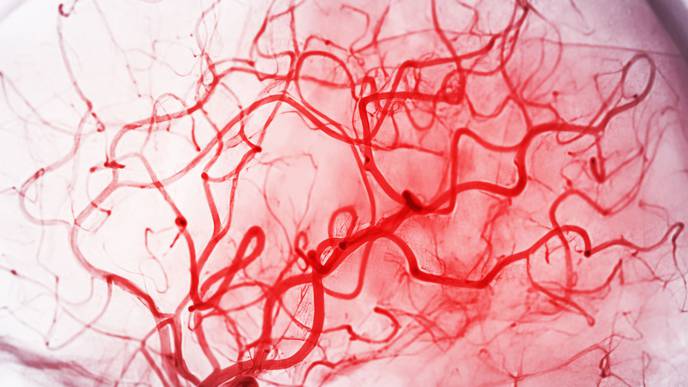CT Scan Is Most Effective to Assess People with Chest Pain

02/01/2024
Previous studies have found less than 40% of patients with stable chest pain undergoing invasive coronary angiography are found to have obstructive coronary artery disease. Recent randomized clinical trials have demonstrated a benefit to using computed tomography angiography (CTA) first in evaluation of these patients, and a new study being presented at the American College of Cardiology Cardiovascular Summit lends credence to this strategy, finding that CT was associated with a higher likelihood of revascularization compared to other imaging modalities or no testing.
Stable angina is a type of chest discomfort that occurs when the heart muscle needs more oxygen than usual—such as during stress, exercise or cold weather—but it’s not getting it, often due to blocked coronary arteries. Patients with stable angina are often treated with guideline-directed medical therapy and lifestyle changes but may also need a coronary revascularization procedure to restore adequate blood flow to resolve their symptoms.
“Right now, when a patient presents to their primary care physician or cardiologist with symptoms suspicious for angina, they are commonly referred for additional testing,” said Markus Scherer, MD, Director of Cardiac CT and Structural Heart Imaging at Atrium Health-Sanger Heart & Vascular Institute and the study’s senior author.
Between October 2022 and June 2023, researchers at Atrium Health-Sanger Heart & Vascular Institute in Charlotte, North Carolina, assessed 786 patients who had no prior diagnosis of coronary artery disease and underwent elective invasive coronary angiography (ICA) for the evaluation of suspected angina. The pre-ICA testing strategies were: no noninvasive testing with direct referral to ICA (44%), stress echocardiogram (3%), stress myocardial perfusion imaging (15%), stress MRI (2%) and coronary CTA (36%). The study cohort had a mean age of 66 years, was 63% male, 37% female, 81% White, 13% Black, 1% Asian, 1% Hispanic and 1% other.
The researchers compared rates of subsequent revascularization between patients whose initial evaluation was coronary CTA versus stress testing or clinical judgement (no testing). The “CT first” strategy was associated with subsequent revascularization in 62% of patients compared to 34% for the combination of other modalities or direct ICA referral.
The 2021 AHA/ACC Guideline for the Evaluation and Diagnosis of Chest Pain suggests either non-invasive functional imaging or coronary CTA as the initial test without specifying a preference for one or the other.
According to the researchers, there are a multitude of reasons health systems don’t currently use a CT first approach, including the availability of high-quality CT scanners; availability of qualified cardiac CT interpreting physicians; and challenges in transitioning to a newer approach after decades of pre-established patterns (i.e. stress testing). Furthermore, a CT first approach is predominately advocated for patients with unestablished coronary artery disease and does not apply to all, as some patient factors may reduce the accuracy and utility of coronary CTA.
“While care must be individualized, for patients with unknown or unestablished coronary artery disease, the transition to a ‘CT first’ strategy should be a high priority for cardiovascular care providers,” Scherer said. “The non-invasive approach has a lower risk and cost than a diagnostic heart catheterization and, for the CT approach—but not stress testing—provides information on the absence, presence and extent of coronary atherosclerosis and whether or not there are high risk plaques as well as vessel blockages, which helps streamline patient management and risk reduction.”
Since coronary CTA is less expensive than both nuclear myocardial perfusion imaging and ICA, there is a direct cost saving to patients and third-party payers with the CT first approach, according to Scherer. From the perspective of a health system, the most financially efficient evaluation approach becomes more important during the transition to a value-oriented health care system.
According to the authors, the study demonstrates “real world” credence to the randomized trials showing similar benefits to a “CT first” strategy and should promote increased adoption of this strategy for the evaluation of patients with chest pain and an unestablished history of coronary artery disease.
“Cardiac catheterization labs are a capital and human resource intensive care environment. Using them for their maximum potential of treating disease, rather than diagnosing it, bring the highest yield for these resources to the health care system,” Scherer said.
The full results of the study and other studies will be presented at the ACC Cardiovascular Summit 2024 in Washington, on February 1-3, 2024. The ACC Cardiovascular Summit 2024 will examine innovative strategies and emerging trends in CV care, assess operational efficiencies to enhance the effectiveness of the CV service line, and adopt customizable approaches that support economic sustainability.
The American College of Cardiology (ACC) is the global leader in transforming cardiovascular care and improving heart health for all. As the preeminent source of professional medical education for the entire cardiovascular care team since 1949, ACC credentials cardiovascular professionals in over 140 countries who meet stringent qualifications and leads in the formation of health policy, standards and guidelines. Through its world-renowned family of JACC Journals, NCDR registries, ACC Accreditation Services, global network of Member Sections, CardioSmart patient resources and more, the College is committed to ensuring a world where science, knowledge and innovation optimize patient care and outcomes. Learn more at www.ACC.org or follow @ACCinTouch.
###

Facebook Comments